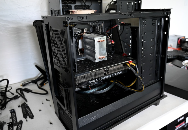
- March 14, 2023
- IT WIFI
- 0
Creating Your Own Custom Computer: A Step-by-Step Guide for Beginners
How to build your own computer – Do you want to have a computer that suits all of your needs, but don’t know where to start? Building your own computer is an excellent way to customize your computer to your specific requirements, and it’s not as complicated as you might think. In this article, we will provide a step-by-step guide to help you build your computer from scratch.
How to build your own computer – Breakdown
Gather Your Components
The first thing you need to do is gather all the components you’ll need to build your computer. These components include the motherboard, processor, memory (RAM), hard drive, power supply unit (PSU), graphics card, and case. Make sure to research each component thoroughly, so you know you’re getting the best bang for your buck.
Assemble Your Computer
Once you have all of your components, it’s time to assemble your computer. First, attach the power supply unit to the case and secure it in place. Then, install the motherboard into the case and attach the processor and RAM. After that, install the hard drive and any additional drives you may have, such as an optical drive or a solid-state drive. Finally, insert the graphics card into the appropriate slot on the motherboard.
Connect Your Components
Now that you’ve assembled your computer, it’s time to connect all of your components. First, connect the power supply unit to the motherboard and other components. Then, connect any additional drives, such as an optical drive or solid-state drive, to the motherboard. After that, connect your monitor, keyboard, and mouse to the appropriate ports on the back of the computer. Once everything is connected, turn on your computer.
Install Your Operating System
Once you’ve turned on your computer, you’ll need to install an operating system. The most popular operating systems are Windows, macOS, and Linux. Make sure to research each operating system before making a decision, as each has its own strengths and weaknesses. Once you’ve selected an operating system, insert the installation media (CD or USB drive) into your computer and follow the on-screen instructions to install it.
Install Your Drivers and Software
Once your operating system is installed, you’ll need to install the necessary drivers for your components, such as your graphics card and sound card. These drivers are typically included on a CD or can be downloaded from the manufacturer’s website. After that, install any additional software you need, such as antivirus software, productivity software, or games.
How to build your own computer – Conclusion
Building your own computer is a great way to customize your computer to your specific needs, and it’s not as complicated as you might think. By following the steps above, you’ll have a fully functional computer that suits all of your needs. Don’t be afraid to ask for help if you get stuck along the way, and make sure to do your research before purchasing any components. Good luck, and happy building!
